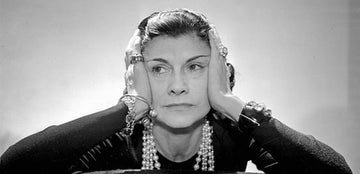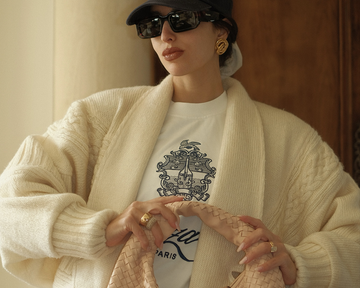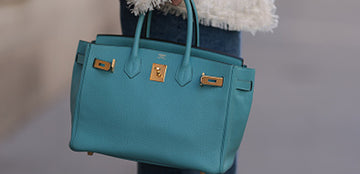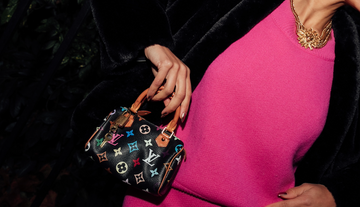
For International Women’s Day, Open For Vintage tells the tale of the three extraordinary women who changed the trajectory of luxury fashion.
Gabrielle ‘Coco’ Chanel

The legacy of Coco Chanel transcends beyond that of a fashion designer – she’s one of the most iconic women in history. Her childhood was fraught with trouble. She was born Gabrielle Bonheur Chanel in Saumur, France, in 1883 but her mother passed away before her teenage years, leading her father to send her and her two sisters to a Catholic convent – which is where she began to sew.
The tales of her beauty are the stuff of fairytales, and fashion folklore even says Coco used her looks to further herself in her professional life. Her affair with Étienne Balsan brought her into the upper echelons of society before her next lover, Arthur Edward Capel, took her to Paris and financed her first shops; she had already worked as a seamstress and had a huge fondness for design. Chanel began as a milliner at 21 Rue Cambon in 1910 before opening hugely successful clothing stores in Deauville and then Biarritz. Having spaces of her own allowed Coco to make the clothes that women wanted to wear, not what society wanted them to. She designed for comfort and functionality using jersey fabrics, and her clientele roster flourished in response.
In 1919, she returned to Paris, opening her couturier at 31 Rue Cambon, a location that remains at the heart of the House of Chanel. The aftermath of the war had left the fashion world in an unsettling place, so while other brands went back to ‘business as usual’, Coco wanted to reinvent clothing for the women who had endured and survived a war. In doing so she created one of the most iconic pieces to date – the women’s suit.
Silvia Venturini Fendi

Silvia Venturini Fendi is one of just a few founding family members left heading a luxury brand. Her grandparents, Adele and Edoardo, started Fendi in 1925 before passing it down to their five daughters, Paola, Franca, Carla, Alda and Anna, the latter being Silvia’s mother. Famed for her role in the Rome social scene, she would work hard and play hard, and was known to stay out all night before turning up to Berghdorf Goodman in her dress and heels.
Her segue into the brand came in the form of Fendissime, the now non-functioning sister-brand to the main label. Venturini Fendi launched this as her inaugural decision at the brand and it saw great commercial success. Her next move was as Head of Accessories, with the creation of arguably Fendi’s most iconic bag in 1997: the Fendi Baguette. She wanted to design something blasé and easy for women to throw over their shoulder, just as the French would balance a baguette under their arm. It was a risk, one that she advocated and pushed for along with Maria Grazia Chiuri, who also worked in the accessories design department.
Venturini Fendi’s lived experience formed her understanding of what the fashionable crowd really wanted to wear, putting her in the best position to create it. Her family’s leadership has kept Fendi at the pinnacle of luxury houses for almost 100 years.
Maria Grazia Chiuri

Maria Grazia Chiuri was born in Rome in 1964 to a military father and dressmaker mother, whom she cites as one of her inspirations along with her grandmother and sisters. The household was full of strong women, with each one encouraged to have her own career.
Grazia Chiuri worked her way up the fashion ladder, beginning with a tenure at Fendi during her 20s. She recruited Pierpaolo Piccioli to work alongside her, and soon after they were both personally recruited by Valentino to create a collection of accessories for the house. They rose through the ranks, succeeding Valentino Garavani as joint creative directors at Maison Valentino. Almost a decade later, Chiuri made history by becoming Dior’s first female creative director in the house’s 73-year run. When she took the reins, Dior was losing interest amongst the younger clientele who had strong beliefs which were reflected in what they wore. She retaliated by revamping Dior as a feminist icon with slogan t-shirts and design collaborations such as the Dior Lady Art project, emblematic of encouraging the next generation of female designers.
She was awarded the Légion d’honneur, France’s highest civilian distinction, in 2019, and was praised for the feminism and activism that is so evident in her work. Her acceptance speech speaks volumes: "I would like to send young women a message to believe in themselves and follow their instincts. Dior is a Maison that represents femininity, and for this reason, I believe that my commitment is to make women aware of their potential.”





